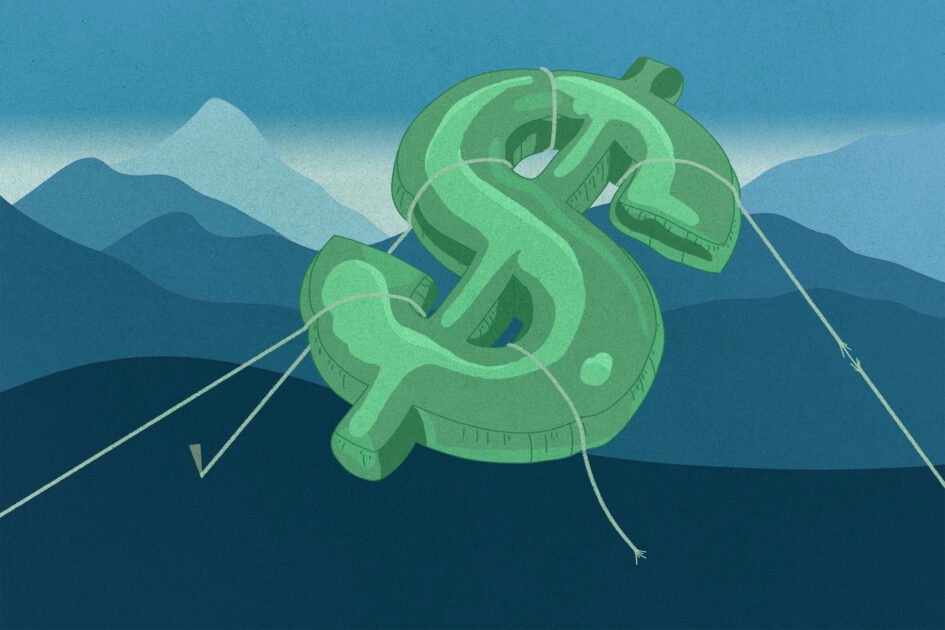The whiplash has left consumers and businesses wondering: When will prices come back down to earth? And are we headed for a sharp economic downturn?
At a recent The Insightful Leader Live event, Kellogg economics professor Sergio Rebelo guided us through various indicators to help diagnose the health of the economy. Here are some highlights from his presentation.
Employment has recovered…
It took more than six years for the US to recover the jobs lost during the 2008 financial crisis – a painful stretch left on politicians’ minds when Covid struck. “We fell off a cliff and went back employment-wise to the dark ages of 2010,” says Rebelo. “The concern was that it might take years to get back to the employment we enjoyed in 2019.”
So this time, in addition to US and European central bankers cutting interest rates to zero – or even below zero – governments have stimulated demand with huge increases in government spending.
Consumer demand rebounded quickly—and so did employment. US unemployment has shrunk to just 3.5 percent, a historically low rate, in just over a year.
… But worker shortages remain
However, the recovering economy is now constrained by long-term demographic trends. Thanks to the lowest birth rates for decades and a slowdown in worker migration, the population of active workers aged 25-54 has fallen in advanced economies. “Fertility rates are currently below the replacement rate, so we are sowing the seeds of a future labor shortage,” says Rebelo. He jokingly suggests a renewed commitment to the slogan “make love, not war.”
Before 2016, the U.S. was making up for declining fertility rates with immigration, “but that channel has declined significantly,” falling from about a million immigrants a year to just 200,000.
Supply chain constraints are easing
Data on global supply chains and product availability also offer a mixed picture.
There are certainly still some pressures on supply. New car inventories remain extremely low, in part due to ongoing semiconductor shortages. If you’re shopping for a car, it’s best not to be picky about colors because “you’re not going to have a lot of options,” says Rebelo. However, used car prices are falling, suggesting that supply and demand are coming into closer balance. “This will help inflation fall.”
The increase in shipping costs caused by the pandemic is also being smoothed out. The price of shipping a 40-foot container from China, which was $1,400 in 2019, jumped to an impressive $10,000 in February 2022. Now, it costs about $2,100.
Food and fuel prices are moderate
Over the past year, supply chain woes and Russia’s invasion of Ukraine have combined to send commodity prices for food and fuel skyrocketing.
An index of inflation-adjusted food prices recorded its highest sharp rise in 2022. “This rise was terrible news for emerging markets because it means many children will suffer from malnutrition,” says Rebelo. But food prices are starting to normalize, he adds.
Fuel prices have also been adjusted. “Broadly speaking, the oil market has rebalanced,” says Rebelo. “Russia sanctions are having an impact: Russian oil is selling at a discount of about 30 percent.” Shortages of natural gas, which is critical in Europe for both heating and electricity, have, for now, eased.
Rebelo also points out that retail prices for food and energy are not falling as fast as falling commodity prices would suggest. This is due to the so-called “rockets and wings” effect, explains Rebelo. Retailers are quick to raise prices when their costs rise, but act much more slowly when those costs fall.
The housing market is on a cliff
In its bid to control inflation, the US Federal Reserve raised the federal funds rate to 4.33%, from near zero during the Covid crisis, and halted its bond-buying program. As a result, mortgages have become much more expensive.
“Rising mortgage rates may not have an immediate impact on the housing market, but over time, it can have a significant impact,” says Rebelo. Higher mortgage rates have already caused the volume of home sales to drop.
Home prices, up 20 percent in 2022, are poised to come back down to earth, or at least catch up with rents. “Rents and home prices should move roughly together over the long term,” says Rebelo. Globally, the cost of renting versus buying a home began to diverge in 2020, at the start of the pandemic. “We may be ready for some realignment.”
The Fed is monitoring wage growth
Economists expect the Federal Reserve to continue raising interest rates in 2023, likely to around 5%.
As the Fed makes decisions on interest rates, it will look closely at wage growth, hoping to avoid a prolonged price-wage spiral. This occurs when rising prices cause workers to demand higher wages, leading companies to raise prices further to pay workers, and the cycle continues. “When people expect inflation to continue, they will continue to raise prices in the future. If we don’t stop inflation, it can become endemic,” says Rebelo. Wage growth increased throughout 2022, but is now slowing.
A sharp rise in interest rates can cause a recession and job losses. Already, the slope of the yield curve—the yield on a 10-year bond minus the yield on a 3-month Treasury bond—has turned negative, suggesting investors expect interest rates to fall in the future as the Fed reacts to recession.
The Fed’s path forward will not be easy. After all, it takes some time for the economy to react to new, higher interest rates. “Imagine driving a car where braking only slows the car down after a lag period. To avoid the people in the car screaming, you have to brake multiple times,” warns Rebelo. “You have to convince the passengers that you are a safe driver.” As the Fed continues to pump the brakes to convince consumers and businesses that it is a safe driver, it may tip the economy into recession.
